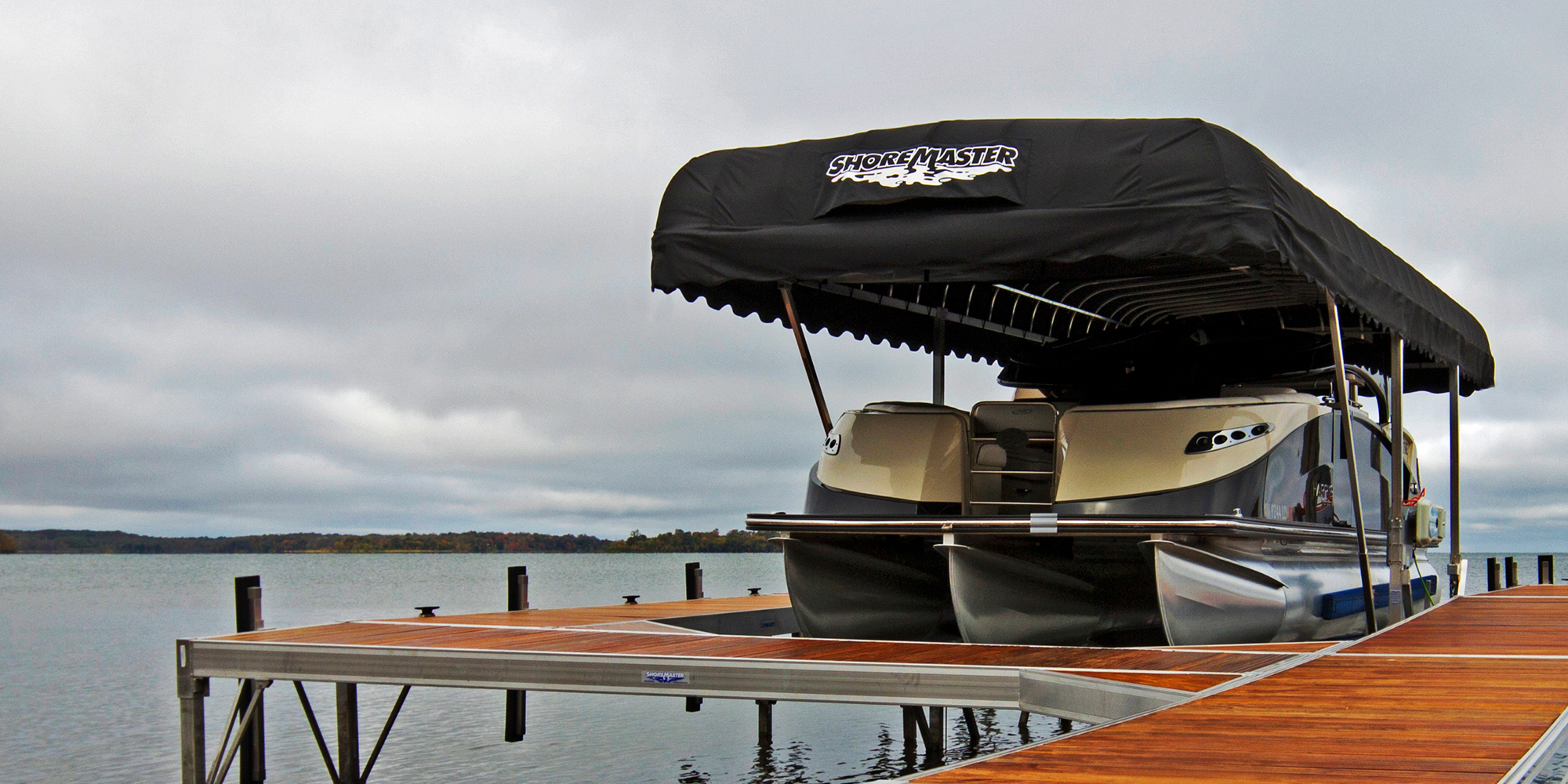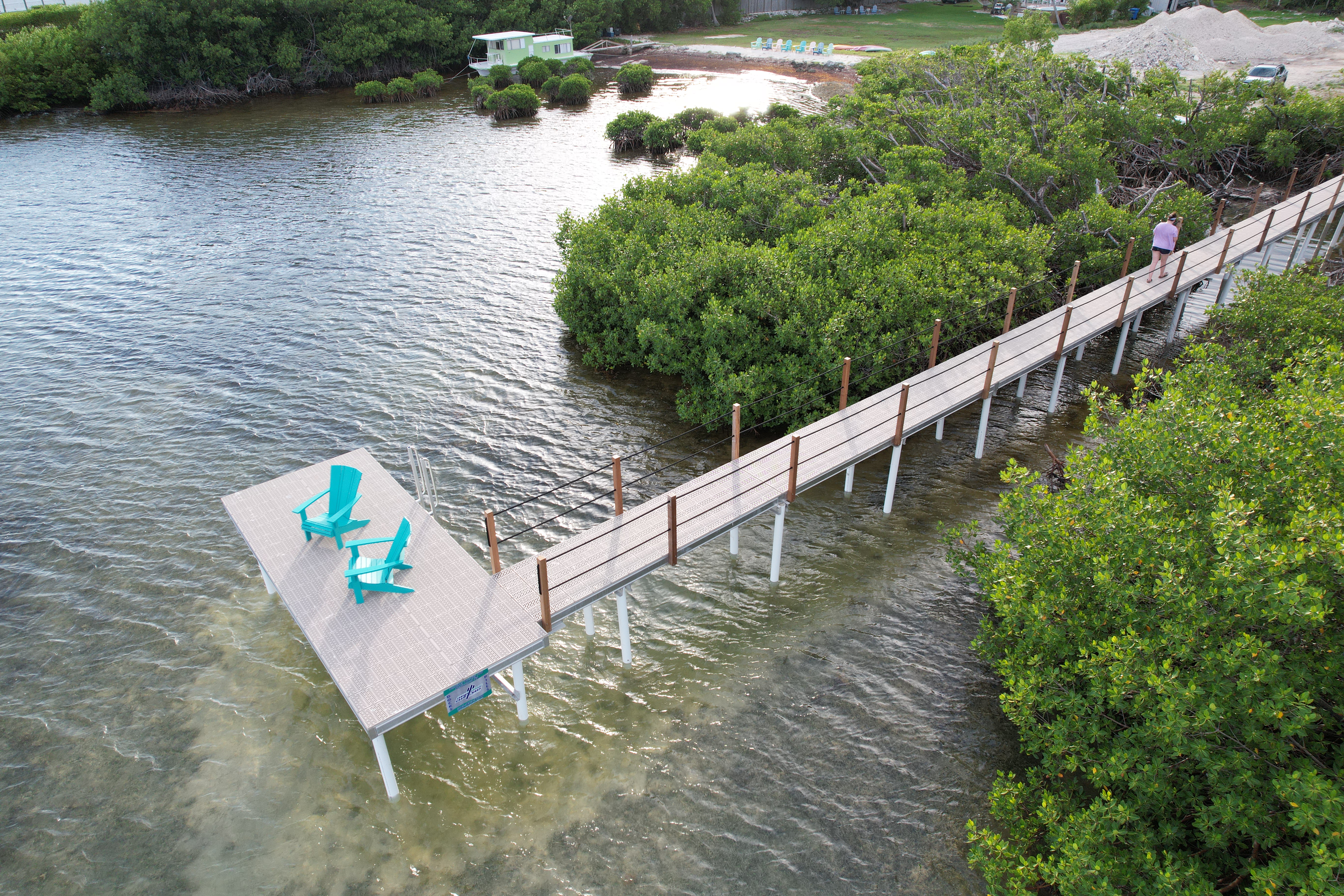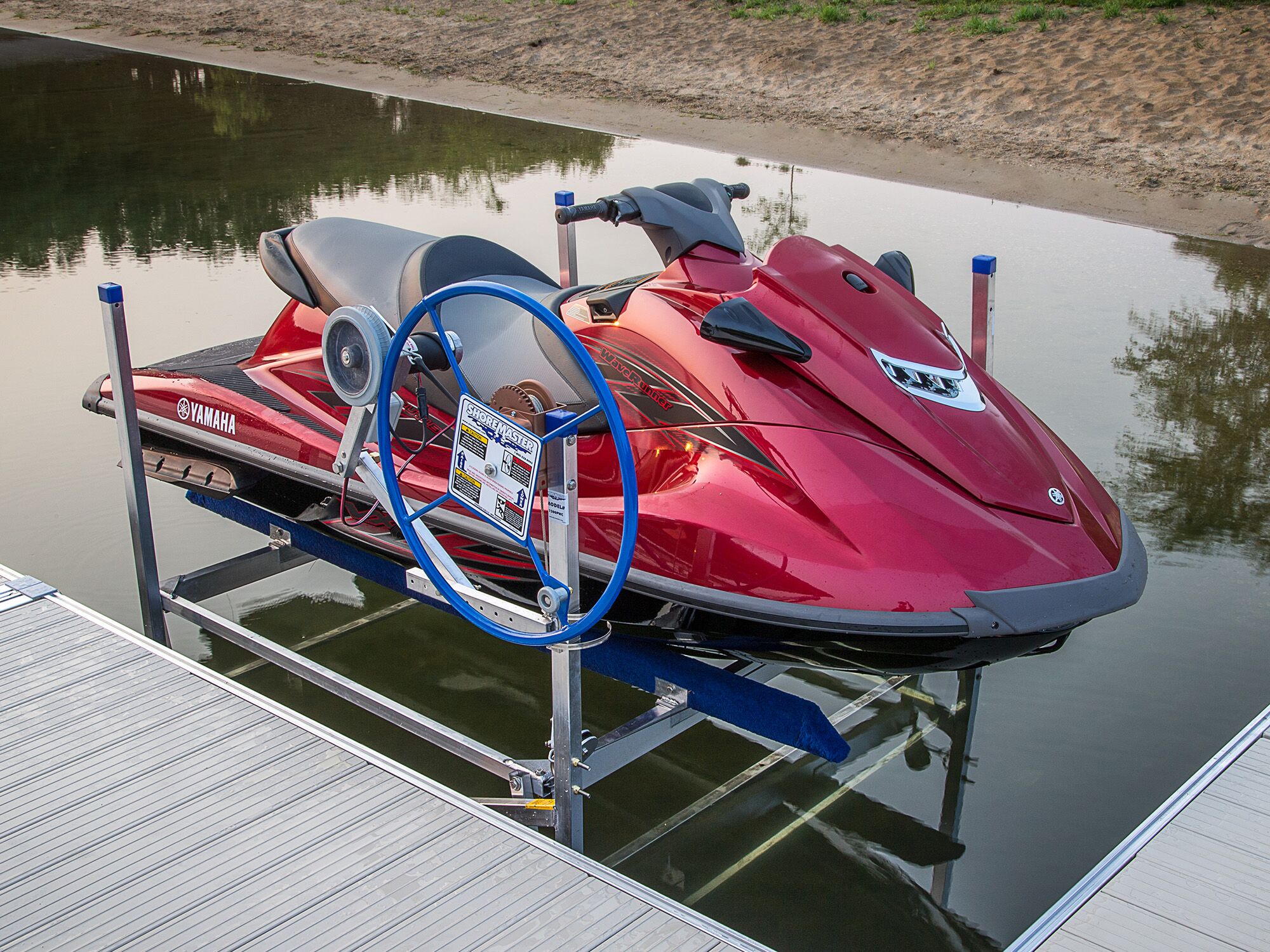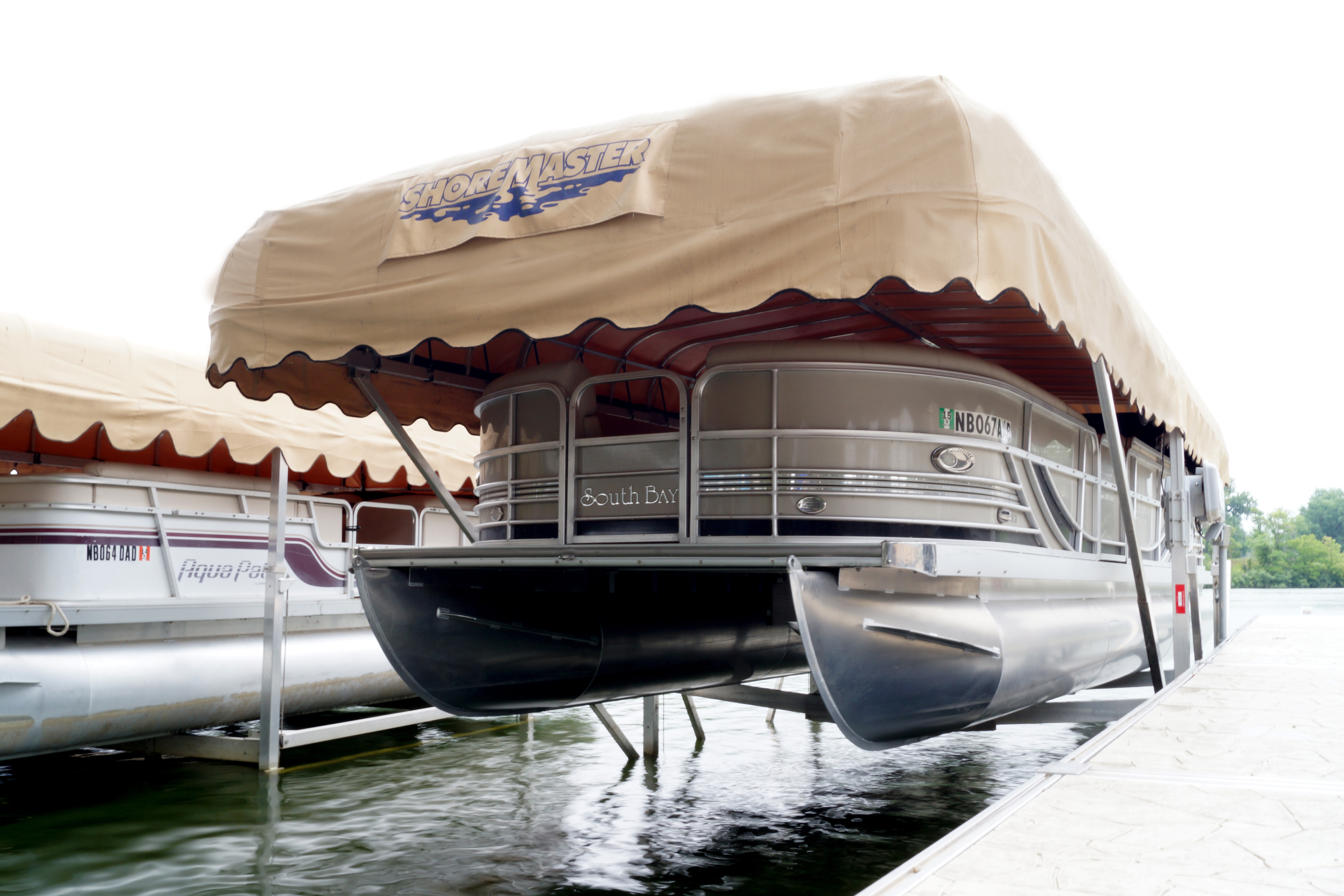October 5, 2023
Aluminum Boat Lift Maintenance Best Practices
Written by ShoreMaster Marketing
Aluminum is a durable metal and one of the best marine materials on the market. An aluminum boat lift is a lightweight and highly durable solution for your waterfront, no matter where you are. Take proper care of your boat lift, and you could get 25 years or more out of its life.
There’s no way to completely protect your aluminum boat lift and dock from everything in the world. Just the fact that it’s outside and on the water will cause a great deal of wear and tear. You can (and should!) keep an eye on your entire system to ensure nothing goes wrong and that small fixes are performed when they are needed. Here are some of the common problem areas for boat lift maintenance and tips to ensure that you’re protecting your boat and boat lift.

Stay Within the Weight Limit
You don’t want to take chances with how much weight your boat lift can hold. Boat lift weight capacities vary — and they’re rated to those capacities for a good reason — so they cannot and should not hold any more than their absolute maximum capacity, even if it’s “just a little bit extra.” A little bit extra means extra strain, which means a shorter lifespan in the long run. In the worst-case scenarios, your boat lift could collapse while your boat is still on it, which is an expensive and distressing proposition.
Your boat’s spec sheet is a good place to start for figuring out the weight capacity that you need, but remember that it’s a starting point. The spec sheet will only list the dry weight of your boat, which means the weight of your boat without anything on it. You’ll need to figure out the weight of what you’ll be carrying onto the boat, including things like fuel and water, and add a roughly 20% margin of error on top to be extra sure that you’re working within your boat lift’s limits. When you’re storing your boat on the lift, remember to remove the plug to keep any rainwater from collecting and adding extra weight.
Weight capacity isn’t just limited to a single number, though. The distribution of that weight also matters for the health of your boat lift. Just because your boat lift can handle the weight of your watercraft doesn’t necessarily mean it’s equipped to handle that weight when it’s distributed off-center. Ensuring your watercraft is centered when it’s on the lift and positioned based on where the weight is located and where it’s lifted goes a long way toward keeping your boat lift running smoothly. Don’t jostle or move the weight around too much while your boat is on the lift. For example, you shouldn’t allow people to stand on the lift while it’s rising and lowering.
If you’re in between sizes, remember that it’s best to have more lifting power than you think you’ll need than to underestimate it. Extra weight capacity also means you can upgrade your boat in the future — and if you take care of your boat lift properly, you can use it for your next boat and beyond.
Cable Care
Without cables, you really don’t have much of a boat lift, so take good care of those cables and inspect them carefully! Sheave alignment should be a part of your regular inspections, and your winder, drum, and spool need attention to ensure that they’re not forcing your cables to wear unevenly. Backlashing cables, slack, and other problems need to be fixed immediately, either with a cable adjustment or with professional help from your local waterfront dealer.
Cables are usually made of stainless steel, meaning that lubrication is essential. Apply penetrating oil or chain and cable fluid to reduce abrasion. Do not use lubricants that have grease in them — grease can make the cable fibers trap moisture in the cable strands, which can cause problems much faster. As long as you’re lubricating your cables, check for fraying and other signs of damage.
Rust, Corrosion, and Other Water Damage
The good news for aluminum boat lift owners specifically is that aluminum is an incredibly durable metal in all sorts of waterfront conditions. Aluminum does not rust or corrode easily and stands up to collisions and other damage well while remaining lightweight and low-maintenance for its entire life. However, non-aluminum boat docks and components need a little attention when it comes to the potential for rust and corrosion, especially in saltwater regions.
Lift beams, bunks, cradles, and gearboxes are all susceptible to damage when exposed directly to water, and cables and other metal components can rust or corrode. Close the drain holes at the top of boat lift motors, gearboxes, and covers, and open the drain holes at the bottom to ensure that water can’t get in easily and has a way to get out if it does. Keep your boat lift out of the water as much as possible when you're not using it. Rinse your boat lift off with fresh water after each use, especially in saltwater areas, to keep it clean and free from hazards. If a metal component has a small amount of rust, it can be safely ground off with few issues. Large areas of rust or rust on crucial parts of the boat lift require professional intervention or replacement parts.
Proper Storage
Seasonal boaters need to consider how they’re storing and winterizing their boat lifts when the weather starts to get cooler. Off-season boat lift storage can contribute to the longevity of your boat lift just as much as its use during boating season. Boat lifts, especially those with hydraulic lift systems, should be stored with the cradle or platform up. If you have a power hoist, remove the battery and store it indoors on a piece of wood.
If you’re storing your boat lift itself outside, mark it with flags to ensure that no people or vehicles run into it, especially if your area is prone to a lot of snowfall. During the winter, you should go out occasionally and run the lift to ensure that it still works. When storing the odds and ends of your entire waterfront system, store everything together and label it clearly — you don’t want to come back next year and find yourself missing some bolts or other small pieces.
If you still have questions about how to maintain your aluminum boat lift system, your local waterfront dealer is a good resource. Not only will your waterfront dealer know about the best products on the market, but their recommendations will also take your local geography and water conditions into account. They can also help you with what you need — whether that’s a replacement part before the season starts up again or help installing or removing your boat lift system.



